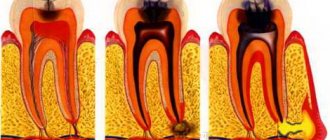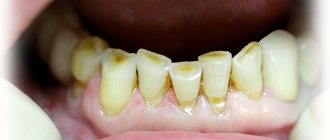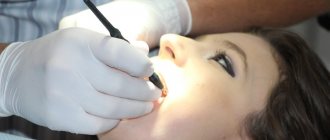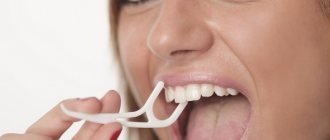Violations of the functionality of the TMJ are quite common. With dysfunction, pathological changes in muscles and ligaments are determined, which causes deterioration of the condition, the appearance of pain, facial asymmetry and other problems. To eliminate dysfunction, various correction methods are used, one of which is wearing a mouthguard. When installed, the device controls the closure of the jaw rows, reduces the load on the joint and muscles, and forms a normal bite.
Which mouthguard to choose
When choosing a boxing mouth guard, remember how much a visit to the dentist costs. “Repairing” one tooth will cost more than a good insert.
Production leaders refused to produce double-sided protectors (for both jaws). Therefore, we will not consider them.
Single-sided plates, as you now know, come in one-, two- and three-layer types. Prices for single-layer protectors start from 150 rubles.
A reliable three-layer Everlast mouthguard , with the maximum degree of protection, will cost 1000-1100 rubles.
Who makes mouthguards
Like any other product that we buy, it is better to choose mouth guards from a brand or company that specializes in the production of these particular products. This rule is especially true with protective equipment! It is these companies that, as a rule, take production more seriously, have patented technologies and conduct their own research in this area. One of the most popular, if not the most popular, manufacturer of mouth guards is the Shock Doctor company, which uses high-quality innovative materials to make boxing mouth guards and mouth guards for other sports.
Boxing mouthguard SHOCK DOCTOR PRO
The company announced guarantee payments (10-15 thousand dollars) to anyone who loses teeth in mouthguards produced by Shock Doctor.
Another brand, Everlast, is widely known as a manufacturer of boxing equipment, producing mouth guards made from modern polymer materials of the highest quality for professionals, amateurs, women and children.
In the Everlast assortment you can find a mouthguard for any boxer, regardless of training level or gender.
Mouth guard EVERLAST EverShield 1-jaw
In the Everlast assortment you can find a mouthguard for any boxer, regardless of training level or gender.
The Bad Boy brand, especially the Bad Boy Pro mouthguard, is also known among professionals and amateurs. This product is characterized by a tight fit to the jaw and the high quality of the materials from which it is made, as well as the presence of additional cushions for protection.
Title Boxing is also a well-known name in the boxing world, although it only started producing boxing equipment 18 years ago. Professionals compare the quality of products and, in particular, mouth guards with the Shock Doctor brand. Mouthguards produced by Title Boxing meet the highest demands of athletes and provide comfort and protection both in sparring and in title fights.
The process of “cooking” the mouth guard. Why is this necessary?
The “cooking” process involves adjusting the protective plate to the characteristics of your jaw. As a rule, thermoplastic mouth guards are subject to “cooking”. The packaging of this protective element contains detailed instructions for its preliminary preparation before use.
Types of boxing guards
Protective plates come in different types and materials. Single-sided - they are designed for the upper jaw. Double-sided - put on two jaws at once. Most often, athletes choose one-sided models; they are the most comfortable and do not make breathing difficult. Double-sided ones are more reliable, but they are harder to breathe with.
The plate size is most often standard. The athlete himself then adjusts it to fit his jaw. Such equipment is most often made from thermosilicone or thermoplastic. The manufacturing material must be plastic under the influence of high temperatures so that the athlete can form equipment to fit his oral cavity. There are standard protective plates that cannot be cooked. They are most often made of silicone, but before purchasing such equipment you should try it on well to see if it fits comfortably.
How to properly weld a mouth guard for boxing
The most popular thermoplastic mouth guards must be “prepared” before use, that is, using heat treatment, they must be adjusted as much as possible to the individual jaw structure. Beginners often have problems with this: one is afraid of overheating the protection, and it does not soften, while another, instead of a mouth guard, ends up with a completely melted piece of material that bears little resemblance to the original product. To avoid wasting money, you can take two copies and practice on the cheapest one first.
Clear teeth marks are visible on the “prepared” mouth guard
How to cook kapa correctly:
- the edges of the mouthguard are trimmed if it is large or causes a gag reflex;
- prepare two bowls, one with boiling water, the second with cold water;
- the mouthguard is immersed for 20-60 seconds (depending on thickness and hardness) in hot water;
- then it is quickly transferred to cold water for a few seconds so as not to get burned;
- The mouthguard is put on the teeth and pressed tightly and bitten, helping with your hands and tongue;
- so that the protection remembers the shape, hold it in the mouth in the desired state for about a minute;
- Finally, the mouth guard is dipped into a container of cold water and waited for 5-10 minutes until it hardens completely.
The result should be an onlay that fits perfectly on the teeth and adheres to them independently. On a properly “prepared” mouth guard, teeth marks are clearly visible, but there are no too thin, almost bitten places. Such protection does not interfere with the boxer, but ensures minimal damage even from crushing blows from the opponent.
Why do you need a mouthguard?
Of course, the absence of teeth is not an aesthetic sight, and the treatment is quite expensive, but knocked out teeth are far from the only thing this accessory protects contact martial arts fighters from. A high-quality pad protects the athlete from:
- possible obstruction of the trachea by a knocked out tooth;
- cuts of the lip due to accentuated blows;
- biting lips, gums, cheeks;
- fracture of the jaw bones.
The design of this piece of equipment absorbs up to 40% of the impact power, which passes from the jaw to the temples. This means significant protection against concussions and hemorrhages. This same shock-absorbing effect helps boxers avoid displacement of the cervical vertebrae.
Such a small detail turns out to be very useful for a person involved in boxing or other contact sports.
Boxing mouthguard sizes and flavors
To make boxing comfortable, and for the mouthguard not to interfere with breathing and other functions, it should fit your teeth like a glove. Unfortunately, there is no gradual gradation of sizes; pads are divided into three types: children's, women's, men's. It is necessary, in accordance with age and gender, to choose an available option. If the mouthguard is small, then it is impossible to do anything. An overly large mouth guard can be trimmed from the edges, and then, if it is thermoplastic, the protruding corners can be smoothed out.
The smallest mouthguards are designed for young fighters
An interesting type of mouth guard is flavored. According to manufacturers, they prevent drying of the oral cavity, help normalize breathing and refresh it. Due to the fact that the flavor is embedded in the material, the service life of the mouth guard is long and is not limited to a couple of uses. You can choose protection with the flavors of orange, mint, apple, lemon, and even chewing gum. The downsides are the distraction factor and the fact that the taste gets boring quickly.
The need for a mouth guard for bruxism: “pro” and “contra”
Positive points
- You can make mouthguards of any color and shade, including transparent ones. This will give complete invisibility, and this is important in the case of using splints for daytime wear, if spasms of the masticatory jaw muscles are not controlled by the patient.
- Putting on and taking off the structure is literally a matter of one second. This allows for timely hygiene procedures.
- The material of the mouth guards, food-grade plastic and silicone, is safe and hypoallergenic. At least, not a single case of rejection of the tray material due to its incompatibility with the body has been recorded.
- Custom-made mouthguards made by a dental technician have a minimal period of adaptation to them and do not interfere with diction. The softness and elasticity of silicone allows you to not feel the mouthguard in your mouth like a foreign object at all.
- Suitable for wearing by all ages.
- When a special bleaching solution or gel is added to the tray, it acts as a container for these bleaching agents and enhances their effect.
Negative
- First of all, cost, especially considering that for the treatment of bruxism in children, you need to prepare at least one spare set of mouth guards due to their possible rapid wear.
- These removable splints should not be used in case of epilepsy or mental disorders.
For those for whom bruxism actually brings both physical and psychological inconvenience, you need to know what procedures await him in the dental clinic.
Features of alignment using a mouthguard
To straighten your teeth, you need to visit an orthodontist. The specialist will examine the oral cavity and tell you whether mouth guards can be used. If no contraindications are found, then a three-dimensional cast is made , and then a plaster model and several aligners are created, taking into account individual characteristics. In particularly difficult cases, the kit contains about 30 products.
At the next visit, the first tray is installed, and the rest are given to the patient. During the treatment process, a person replaces the structure every 2-3 weeks. In addition, it is recommended to visit a doctor every 1-1.5 months to monitor the alignment of your teeth.
The duration of treatment directly depends on the degree of deformation of the dentition. In the simplest cases, it will take only 2-4 months to correct the defects, and in complex situations, treatment will take 1-2 years.
Purposes of using a night guard
- Prevent abrasion of tooth enamel.
- Relieve tension in the chewing muscles of the jaw.
- Normalize the functioning of the temporomandibular joint.
Often, wearing a sleep guard is the first step in correcting your bite and precedes the installation of braces. And in some cases, mouthguards are worn when braces are already installed to protect them from accidental breakage due to involuntary clenching of the jaws. They can also serve as protection for crowns and fixed dentures.
How to “cook” a mouthguard correctly
Almost all existing thermoplastic linings are prepared according to the same principle, and most often a dental guard for boxing is sold with instructions that indicate everything necessary. In general terms the process looks like this:
We choose any container for boiling water, into which the selected mouthguard can fit entirely.
Place the pan on the fire, let the water boil and lower the cover into it. Make sure it is completely under water.
Keep in boiling water for no more than half a minute.
Remove from the water, wait a few seconds to avoid burns (be careful not to let it cool completely), and place it on your teeth. After this, clench your jaws tightly, apply pressure and press the outer sides of the mouth guard to your teeth.
Proper preparation can be judged by how comfortably and tightly it sits on the teeth when cooled.
How to properly wear a protective plate during combat?
Before putting on a boxing mouthguard, you should prepare it. There are burls that must first be boiled. After which you should adjust it to your jaw, trim off unnecessary parts. There are also protective plates that do not require preparation and can be put on immediately. Once you have a mouthguard specifically for your jaw in your hands, you can start using it.
How to put on a boxing mouthguard:
- Put on the mouth guard and make sure both jaws are closed completely.
- It should sit comfortably on the teeth and cover the teeth and gums tightly.
- If you're comfortable with this skid plate, then it's for you. If there is discomfort during use, the protection should be adjusted or changed.
If you are unable to fit the protective plate comfortably, it may be made by a bad manufacturer. Often, cheap equipment is not comfortable or of good quality, so it will not protect you properly.
How are aligners different from braces?
Both mouthguards and braces are used to correct bites in adults and children, but these designs have significant differences that determine both the disadvantages and advantages of each of them. To make it easier for patients to navigate in choosing the appropriate correction method, below is a table with a comparative analysis of both systems.
Aligners or braces
Table. Mouth guards and braces: comparison.
| Characteristics | Mouthguards | Braces |
| The effectiveness of bite correction | Effective only for minor bite pathologies. | Can be used for severe deformation of the dental system (including severe and complicated cases). |
| Wearing period | From 8-10 months to 2 years. | From 1 year to 2-3 years. |
| Possibility of use in childhood | Can be used in childhood (treatment of bruxism using silicone teethers is especially common). | It is acceptable to use in children over 5 years of age, but the possible risks of enamel damage must be taken into account. |
| Visibility to others | Mouthguards are made of transparent silicone or bioplastic and are practically invisible on the teeth, which makes their use more comfortable and provides psychological comfort to the patient. | Vestibular braces, which are installed on the front surface of the teeth, are clearly visible to others. If these are ordinary metal braces, wearing such a design can cause emotional distress for the patient (especially children and adolescents). |
| Comfort to use | Adaptation to the aligners usually occurs almost immediately after installation. In rare cases, this process may take 3-5 days. | Nagging pain and discomfort when wearing braces can appear at any time as the teeth gradually shift. The duration of such periods can range from 2-3 days to several weeks. |
| Degree of gum trauma | Due to the soft materials, the mouthguards practically do not injure the mucous membranes and soft tissues of the oral cavity. | Braces can have a destructive effect on tooth enamel and damage the mucous membranes of the tongue, lips and gums. |
| Possibility of removal without visiting the dental office | Maybe. | Impossible. |
| Ease of hygienic care | The mouthguard can be easily removed from the mouth to clean the teeth and the structure itself, which ensures a high level of hygiene during orthodontic treatment. | The level of hygiene when using brace systems is quite low due to the inaccessibility of surfaces covered with orthodontic brackets and locks. |
| Price | From 6 to 15 thousand rubles for one mouth guard. | From 70,000 rubles. |
At first glance, it may seem that treatment with mouth guards is a cheaper option compared to braces, but this is not the case. Aligners must be changed regularly, and one set can contain up to 25-30 drops per course of treatment. The total cost of the course is usually more than 200 thousand rubles.
Diagram of the results of treatment with mouthguards
We invite you to read: Chronic periodontitis treatment - Dr. Dent
Why is bruxism dangerous?
Bruxism is uncontrollable grinding or clenching of teeth due to spasms in the chewing muscles. This is a fairly common phenomenon, but not all patients realize that the disease poses serious problems:
- pathological abrasion of tooth enamel;
- loss of fillings, crowns;
- dysfunction of the temporomandibular joint (clicking, pain when opening/closing the mouth);
- chronic insomnia and fatigue;
- headaches, dizziness.
Teeth grinding is mainly characteristic of the night, when a person is sleeping and does not control the movements of the jaw. However, in many patients the problem also manifests itself during the day - they involuntarily clench their teeth under stress or when concentrating.
Design features
Here we can distinguish three main types, we will arrange them in order of increasing quality and characteristics.
Standard (cast)
These are universal factory mouthguards that do not have outstanding characteristics. They are made of plastic (there are also silicone versions), inexpensive, and quite suitable for beginner amateur athletes. The main disadvantages are poor fixation, standard shape, without the possibility of changes, and insufficient thickness.
Thermocaps (thermoplastic)
This type of mouth guard is a kind of semi-finished product - the product requires individual adjustment, which is done at home (“brewed” and conveys the structural features of the teeth, jaw, and bite). They can have a multilayer structure (a combination of materials is used) and have good fixation.
Custom mouth guards
They are used by professional athletes and are made to order from the dentist (an individual impression of the jaw and bite is made). These mouthguards provide maximum protection and have shock-absorbing properties. Modern technologies make it possible to produce neuromuscular mouthguards that are able to respond to changes in muscle forces (involuntary clench/unclench the jaw) and find the optimal position.
How is bruxism treated?
If a problem occurs, you should contact an orthodontist. He will select a special mouth guard to wear while you sleep. It is an elastic dental splint made of biocompatible plastic. This orthodontic design responds to the load when the patient compresses the dentition, preventing the chewing muscles from overexerting. As a result, the lower jaw relaxes and muscle hypertonicity goes away. Treatment will be effective if you wear the mouth guard for at least 10 hours a day.
Why do you need dental guards?
Dental mouthguards are needed to correct deficiencies in the dentition. In accordance with the wishes of the patient and the condition of his oral cavity, the doctor selects a suitable system. Mouth guards are placed on the teeth to correct anatomical defects, to consolidate the results of orthodontic treatment, or during teething, to set the teeth in the right direction. Onlays are also used in aesthetic dentistry.
To correct the bite
Most often, transparent overlays are used to correct anatomical defects. They are an alternative to braces and can easily replace metal braces. In this case, aligners have advantages, since they do not require special dietary restrictions and do not interfere with the aesthetics of the smile with metal plates.
On a note!
For adults, this option for correcting defects is ideal. It is less suitable for children, since it is not always possible to control how long the structure will be worn.
Mouthguards for correcting bites require constant wearing. At the initial stages of treatment, they can be removed only for hygiene procedures and during meals. The patient needs to wear the system around the clock, so it cannot be abandoned even at night. You will have to wear aligners to correct your bite from six months to one and a half years, depending on the severity of the anatomical defects. Plates are not suitable for all patients, since in difficult cases the installation of braces is still required.
For teething in children
The eruption of permanent teeth in a child may occur unevenly and untimely. If the baby tooth has not yet fallen out, but the molar is already growing, then it may take on the wrong position.
On a note!
Up to 50% of children aged 8–10 years experience crooked teeth. To avoid having to get braces in the future, you need to take care of the beauty of your smile line now.
Teething mouthguards for children are made individually. Most often, their use is limited to 4-6 months.
For whitening
Trays can be used to lighten enamel. Such designs are most often used at home and do not require an additional visit to the dentist.
The principle of operation of the whitening pad is based on preventing the rapid washing off of the lightening substance from the surface of the tooth. Using a syringe, it is applied to the enamel, after which a tray is secured on top. The wearing period of the system is described in the instructions for use and differs for different whitening substances.
For the treatment and restoration of enamel
Trays for enamel restoration are often used after professional whitening. As a result of exposure, tooth sensitivity increases. For treatment, dentists prescribe remineralizing gels with a high fluoride content. They are applied to the mouthguard, after which the lining is installed on the dentition. For each patient, the treatment period and duration of use of the medicine are determined individually.
For bruxism
Bruxism is a condition in which a person suffers from teeth grinding. Most often this happens unconsciously, during sleep or during stressful situations. Bruxism accelerates the wear of enamel. This leads to increased sensitivity and decreased aesthetics of the smile line. To protect against tooth friction at night, it is recommended to wear mouthguards. They are made of dense elastic material and are worn over the entire surface of the tooth or only half.
Retention systems after wearing braces
Correcting a malocclusion using a braces system is an effective and reliable method. After the jaw and dentition have assumed the correct anatomical position, the staples are removed. However, for old times’ sake, teeth may begin to shift in the opposite direction. Sometimes they take a completely unexpected position. Aligners or retention systems help prevent this complication.
The structures are made of rigid transparent material individually for the patient and require use for 20-22 hours. Such mouthguards hold the teeth in a new position and prevent them from becoming deformed again.
Protective sports
Protective sports systems have different characteristics and indications for use. They are:
- three-layer – suitable for water polo, rugby, hockey, boxing;
- two-layer – required for martial arts, field hockey, skateboarding, basketball and American football;
- single-layer – needed by non-professional athletes, as well as children who play sports.
Important!
When playing some sports, it is necessary to wear a mouthguard, since there is a high risk of tooth injury. This can lead to premature loss of the unit and the need for prosthetics. All this is associated with financial costs and loss of time.
How to “cook” a boxing mouthguard, instructions (video)
In fact, there is no need to cook the kapa. The workpiece is immersed in hot water (80-90° C) for 30-60 seconds. The exact time and water temperature are indicated in the instructions.
Then the plate is taken out, shaken (or dipped in cold water for 1 second) and put on the teeth.
The plate is pressed on the teeth with your fingers. The insert must be pulled over the gum and pressed tightly against the teeth.
After the protector is placed on the upper jaw, you need to close your teeth and bite down. There is no need to clench your teeth too hard to avoid biting through the protector.
The last step is to immerse the liner in cold water.
To reinforce the information, watch the video. It's easier to see once than to read twice.











